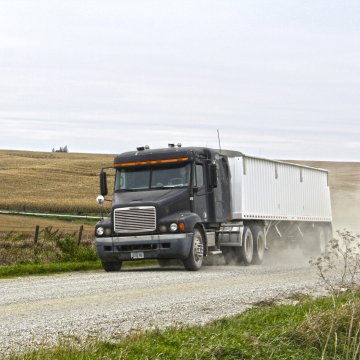Content ID
Tips for saving fuel in diesel vehicles

You’ve probably noticed fuel prices are a little high right now. To make sure you’re getting the most bang for your buck at the pump, here are a few tips for truckers and farmers with diesel vehicles to save fuel and money.
Shut it down
If it isn’t necessary, don’t leave the truck or tractor on idle. Idling will burn about 0.8 gallons of fuel per hour in a Class 8 tractor-trailer size truck, according to the U.S. Department of Energy. Typically, the average long-haul truck will idle about 1,800 hours per year, which will use up about 1,500 extra gallons of diesel.
- WATCH VIDEO: 6 tips to save on diesel
To avoid idling, the U.S. Department of Energy recommends investing in an auxiliary power unit for use of climate control and electronic devices. These have a high initial investment cost, but generally burn between 0.2 and 0.5 gallons of fuel per hour, according to the fact sheet. This is a marked decrease from the 0.8 gallons used with an idling engine.
Whenever possible, make sure to turn off any connected accessories or attachments that aren’t in use.
Optimized drive
Operators increase fuel consumption for every mile per hour driven over 55 mph, according to the Diesel Technology Forum (DTF). For each mile per hour driven over 55 mph, drivers lose over 0.1 miles per gallon in fuel economy.
Using cruise control, especially with newer, advanced predictive cruise control systems, can make for smoother driving. Cruise control optimizes engine and travel speed based on the load operators are transporting, and can lead to a boost in fuel efficiency.
While driving, it’s best to operate the vehicle in the highest possible gear. This reduces engine rpm and fuel consumption. According to Cummins, a manufacturer specializing in diesel engines, the most fuel-efficient “sweet spot” is between 1,300 and 1,500 rpm.
Avoid hasty acceleration and speeding off from the green light – that will only increase engine speeds and waste fuel. If the vehicle has an automatic transmission, a slower acceleration allows the transmission to up-shift at the lowest rpm possible.
Maintenance review
Maintaining proper tire pressure can help with fuel economy as well as extending the life of the tire, according to DTF. For every 10 psi a tire is inflated below recommended fill, vehicles lose 1% of their fuel economy. If your vehicle doesn’t already have one, installing a tire pressure monitoring system with sensors on each wheel can help you keep an eye on tire inflation and temperature.
Performing preventive maintenance such as oil and air filter changes on the suggested schedule can help with fuel efficiency as well.
Even if you’re familiar with your drive, it’s worth regularly reviewing your routes and trip timing. Finding fuel-efficient routes where possible — avoiding construction and peak traffic times — will help minimize congestion and delays.
Tip of the Day
When you mow in a remote area




